Discover 15 hidden attractions, cool sights, and unusual things to do in Avignon (France). Don't miss out on these must-see attractions: Palais des Papes, Pont Saint-Bénézet, and Walls of Avignon. Also, be sure to include Avignon Cathedral in your itinerary.
Below, you can find the list of the most amazing places you should visit in Avignon (Provence-Alpes-Côte d'Azur).
Table of Contents
Palais des Papes
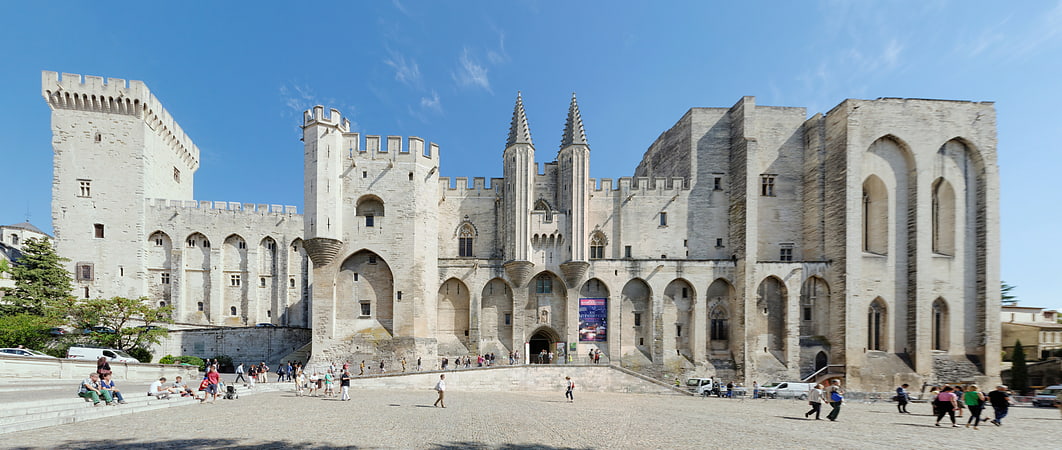
Also known as: Palais des papes d'Avignon
14th-century papal palace with frescoes. The Palais des Papes is a historical palace located in Avignon, Southern France. It is one of the largest and most important medieval Gothic buildings in Europe. Once a fortress and palace, the papal residence was the seat of Western Christianity during the 14th century. Six papal conclaves were held in the Palais, leading to the elections of Benedict XII in 1334, Clement VI in 1342, Innocent VI in 1352, Urban V in 1362, Gregory XI in 1370 and Benedict XIII in 1394. Since 1995, the Palais des Papes has been classified, along with the historic center of Avignon, as a UNESCO World Heritage Site, for its outstanding architecture and historical importance for the Papacy.[1]
Address: Place du Palais, 84000 Avignon (Intra-Muros)
Pont Saint-Bénézet

Historic remains of 12th-century bridge. The Pont Saint-Bénézet, also known as the Pont d'Avignon, was a medieval bridge across the Rhône in the town of Avignon, in southern France. Only four arches survive.
A wooden bridge spanning the Rhône between Villeneuve-lès-Avignon and Avignon was built between 1177 and 1185. This early bridge was destroyed forty years later in 1226 during the Albigensian Crusade when Louis VIII of France laid siege to Avignon. Beginning in 1234 the bridge was rebuilt with 22 stone arches. The stone bridge was about 900 m (980 yd) in length and only 4.9 m (16 ft 1 in) in width, including the parapets at the sides. The bridge was abandoned in the mid-17th century as the arches tended to collapse each time the Rhône flooded making it very expensive to maintain. Four arches and the gatehouse at the Avignon end of the bridge have survived. The Chapel of Saint Nicholas which sits on the second pier of the bridge, was constructed in the second half of 12th century but has since been substantially altered. The western terminus, the Tour Philippe-le-Bel, is also preserved.
The bridge was the inspiration for the song Sur le pont d'Avignon and is considered a landmark of the city. In 1995, the surviving arches of the bridge were classified as a World Heritage Site, together with the Palais des Papes, Cathédrale Notre-Dame des Doms, and other monuments from the historic centre of Avignon, because of its testimony to Avignon's leading role in the Papacy during the 14th and 15th centuries.[2]
Address: Boulevard de la Ligne, 84000 Avignon (Intra-Muros)
Walls of Avignon
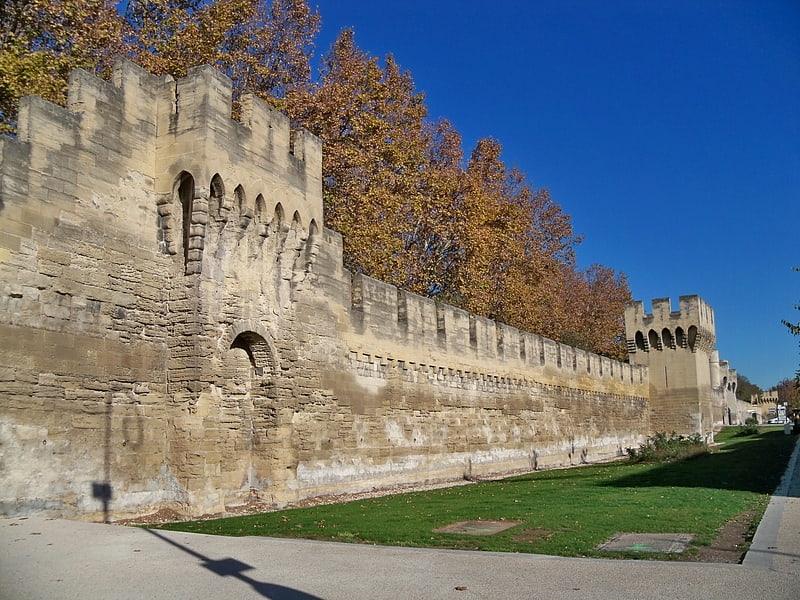
Fortress in Avignon, France. The walls of Avignon are a series of defensive stone walls that surround the city of Avignon in the south of France. They were originally built in the 14th century during the Avignon papacy and have been continually rebuilt and repaired throughout their subsequent history.
The walls replaced an earlier double set of defensive walls that had been completed in the first two decades of the 13th century. During the Albigensian Crusade the town sided with the Count of Toulouse, Raymond VII but in 1226, after a three-month siege by Louis VIII of France, Avignon capitulated and was forced to dismantle the walls and fill in the moats. Beginning in around 1231, the defences were rebuilt. Although these early walls have not survived, their path is preserved in the street plan of the city.
In 1309 Pope Clement V moved to Avignon and under the papacy the town expanded outside the limits of the earlier city walls. From the 1350s during the Hundred Years' War the town became vulnerable to pillage by marauding bands of mercenaries and in 1357 under Innocent VI, the fifth Avignon pope, work began on the construction of new set of city walls to enclose the expanded town. The walls took nearly 20 years to complete.
The walls stretch for 4.3 km (2.7 mi) and enclose an area of 150 ha (370 acres). There were originally twelve gates controlling access to the city but this number was reduced to seven when the fortifications were modified between 1481 and 1487. There are now 15 vehicular entrances and 11 pedestrian entrances.[3]
Address: Boulevard de la Ligne, 84000 Avignon (Intra-Muros)
Avignon Cathedral
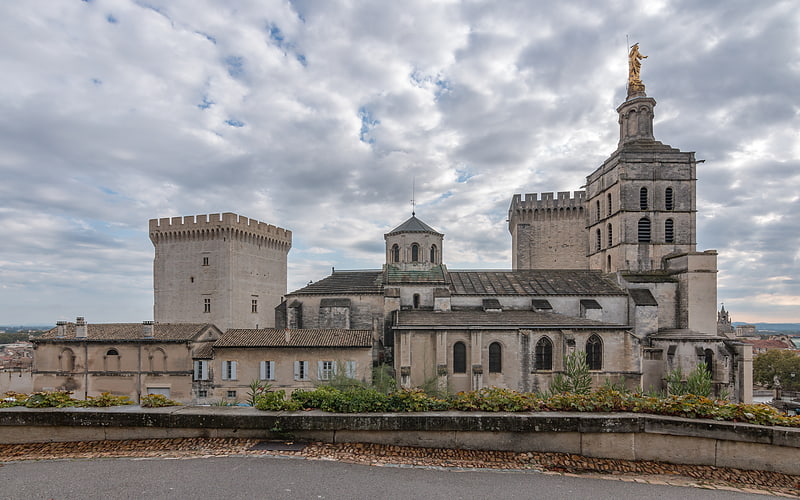
Also known as: Cathédrale Notre-Dame des Doms d'Avignon
12th-century cathedral with papal tombs. Avignon Cathedral is a Roman Catholic church located next to the Palais des Papes in Avignon, France. The cathedral is the seat of the Archbishop of Avignon.
The cathedral is a Romanesque building, constructed primarily in the second half of the 12th century. The bell tower collapsed in 1405 and was rebuilt in 1425. In 1670–1672 the apse was rebuilt and extended. This led to the destruction of the medieval cloister.
The building was abandoned and allowed to deteriorate during the Revolution, but it was reconsecrated in 1822 and restored by the archbishop Célestin Dupont in 1835–1842. The most prominent feature of the cathedral is a gilded statue of the Virgin Mary atop the bell tower which was erected in 1859. The interior contains many works of art. The most famous of these is the mausoleum of Pope John XXII (died 1334), a 14th-century Gothic edifice. It was moved in 1759, damaged during the Revolution, and restored to its original position in 1840. The cathedral was listed as a Monument historique in 1840. In 1995, the cathedral, along with the Palais des Papes and other historic buildings in the Avignon city center, became a UNESCO World Heritage Site because of its outstanding architecture and its importance during the 14th and 15th centuries.[4]
Address: Place du Palais, Avignon (Intra-Muros)
Angladon Museum

Museum in Avignon, France. The Angladon Museum - Jacques Doucet is a museum at 5 rue Laboureur in Avignon. It is based in the hôtel de Massilian, a former hôtel particulier built in the 18th century. The museum was established in 1996 according to the wishes of Jean and Paulette Angladon-Dubrujeaud, heirs to the widow of the Parisian couturier Jacques Doucet. Its collections includes artworks from the 18th to 20th century.[5]
Address: 5 rue du Laboureur, 84000 Avignon (Intra-Muros)
Musée du Petit Palais
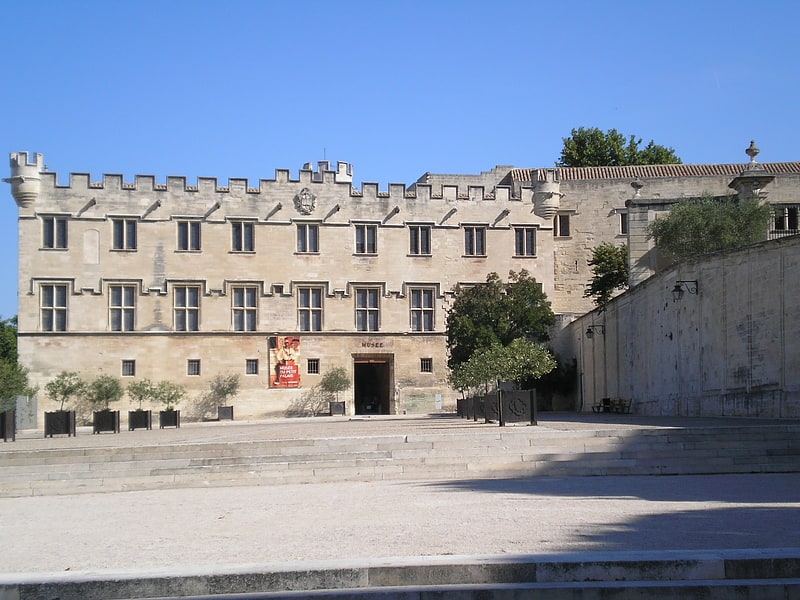
Renaissance masterpieces in 1300s palace. The Musée du Petit Palais is a museum and art gallery in Avignon, southern France. It opened in 1976 and has an exceptional collection of Renaissance paintings of the Avignon school as well as from Italy, which reunites many "primitives" from the collection of Giampietro Campana. It is housed in a 14th-century building at the north side of the square overlooked by the Palais des Papes. The building, built in the early 14th century as the residence of the bishops of Avignon, was made a UNESCO World Heritage Site as part of the historic center of Avignon in 1995.[6]
Address: Place du Palais, 84000 Avignon (Intra-Muros)
Tour Philippe le Bel
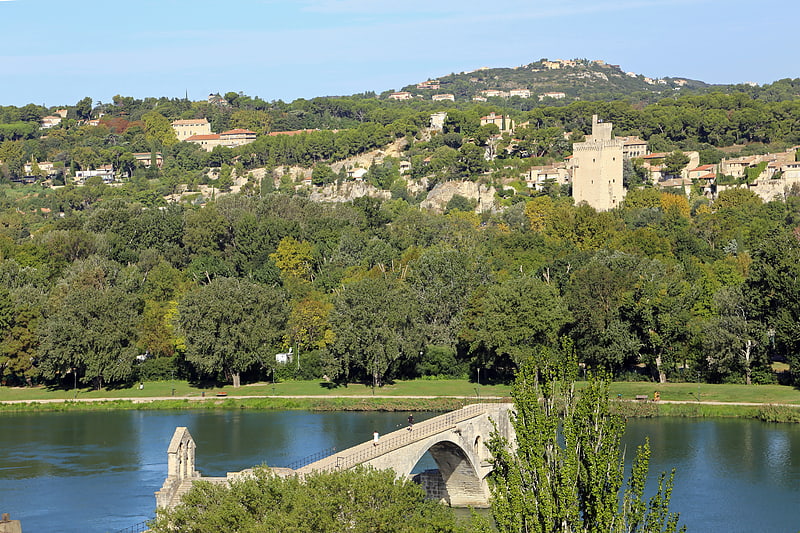
Also known as: Tour Philippe-le-Bel
Fortress in Villeneuve-lès-Avignon, France. Tour Philippe-le-Bel is a medieval tower in Villeneuve-lès-Avignon which marked the French terminus of the Saint-Bénézet Bridge across the Rhone between the Kingdom of France and Papal territory of Avignon. It is named after the French king Philippe-le-Bel who was responsible for its construction.
A tower with only two storeys was completed in 1302. In spite of protests from the Count of Provence and the population of Avignon, Philippe-le-Bel pressed ahead and built a gatehouse at the end of the bridge. The tower and gatehouse formed part of a fortress with a curtain wall that enclosed several buildings including a chapel and a residence for the châtelain. A third storey was added to the tower in the middle of the 14th century.
The Saint-Bénézet Bridge was abandoned in 1669 and the fortress then ceased to serve any useful function. The French crown continued to pay for repairs, but after the French Revolution the buildings were abandoned and allowed to fall into ruins. In 1822 the town of Villeneuve-lès-Avignon decided to demolish all of the fortress except the present tower. It was listed as a Monument historique in 1862 and is now open to the public.[7]
Address: Rue Montee-de-la-Tour, 30404 Villeneuve-les-Avignon (Villeneuve-lès-Avignon)
Louis Vouland Museum
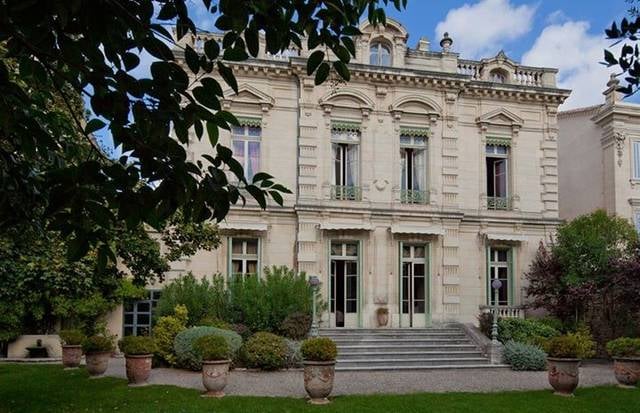
Museum in Avignon, France. The Louis Vouland Museum is a 17th and 18th century decorative arts museum in Avignon, housed in a hôtel particulier designed by Villeneuve-Esclapon. Its collections include Parisian furniture, faience from Marseille and Moustiers, metalwork, tapestries and paintings.[8]
Address: 17 rue Victor Hugo, 84000 Avignon (Intra-Muros)
Fort Saint-André
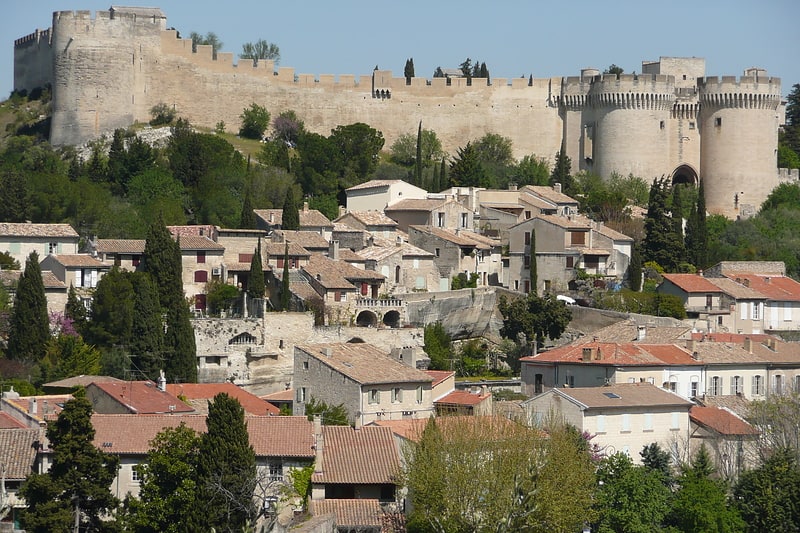
Monument in Villeneuve-lès-Avignon, France. The Fort Saint-André is a medieval fortress in the commune of Villeneuve-lès-Avignon in the Gard département of France, dating from the first half of the 14th century.[9]
Address: Rue Montée du Fort, 30400 Villeneuve-lès-Avignon (Villeneuve-lès-Avignon)
Palais du Roure
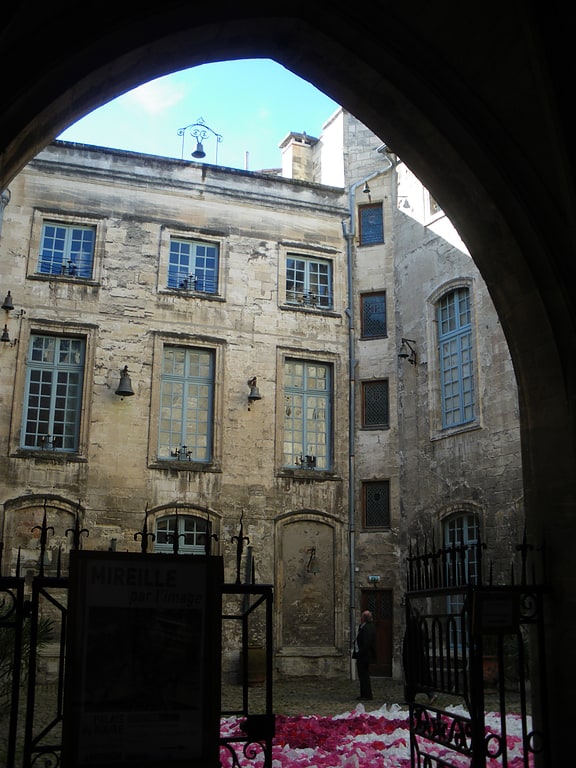
Historical landmark in Avignon, France. The Palais du Roure is a listed hôtel particulier in Avignon, France.[10]
Address: 3, Rue College du Roure, 84000 Avignon (Intra-Muros)
Opéra Grand Avignon
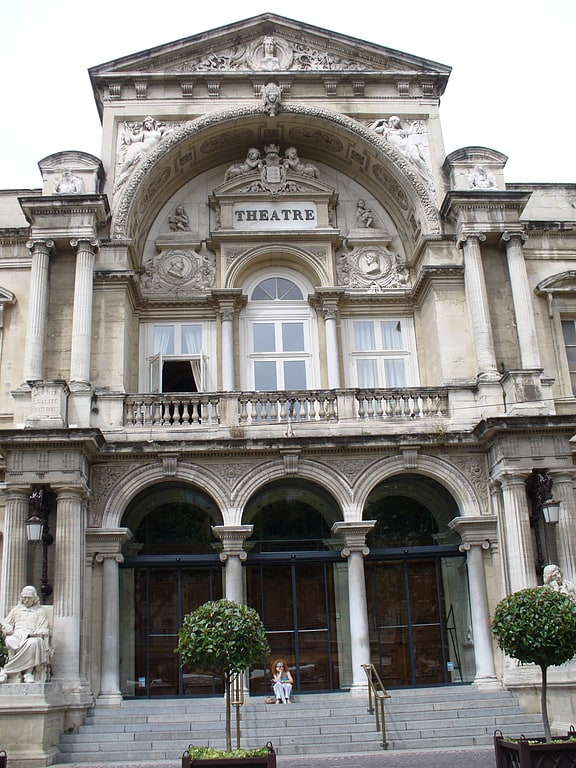
Also known as: Opéra d'Avignon
The Opéra d'Avignon is an opera house located in Avignon, France that has been in operation for almost two centuries. The initial opera house was constructed in 1824–1825, and opened with its inaugural performance on 30 October 1825. The original opera house was destroyed in a fire on 26 January 1846. The current opera house was built in 1846–1847 and was designed by architects Léon Feuchère and Théodore Charpentier.[11]
Address: Avignon, Place de l'Horloge
Musée Calvet
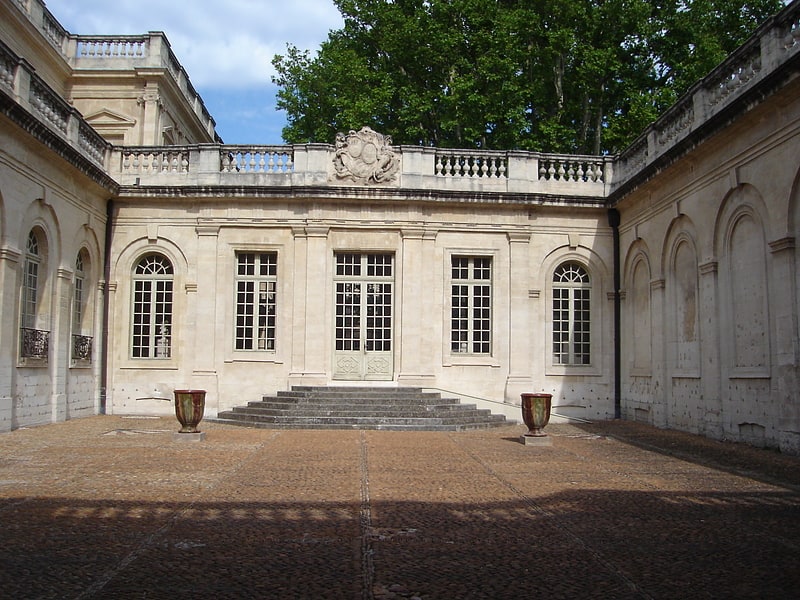
Also known as: Fondation Calvet
Museum in Avignon, France. La Fondation Calvet is an art foundation in Avignon, France, named for Esprit Calvet, who left his collections and library to it in 1810. The foundation maintains several museums and two libraries, with support from the town. The original legacies of paintings, archaeological items, coins and medals, and medieval sculpture have been added to by many other legacies, and a significant deposit of works of art from the Louvre. The archaeological collections and medieval sculpture are now housed separately in the "Musée Lapidaire" - once the chapel of the Jesuit College. The main museum is in an 18th-century city mansion, to which modern buildings have been added; the Library bequeathed by Calvet, and the important collection of over 12,000 coins and medals, have moved to a different location in the city.
The foundation has changed its name on several occasions. It was initially called the "Bibliothèque Calvet", then the "Museum Calvet", then "Musée Calvet", and since 1985 the "Fondation Calvet". The foundation now manages seven museums, two libraries, and an important collection of coins and medals.
In Avignon:
- Bibliothèque Calvet, the main library, housed since 1986 in part of what was once a cardinal's palace, the Livrée Ceccano
- Musée Calvet, the main art gallery, housed in an 18th-century city mansion (a hôtel particulier), the Hôtel de Villeneuve-Martignan
- Médaillier Calvet, a collection of coins and medals
- Musée Lapidaire, a collection of sculptures and archeological finds, housed in what was once the chapel of a Jesuit college
- Museum et Bibliothèque Requien, a natural history museum
- Musée du Petit Palais, a collection of medieval and renaissance paintings
In Cavaillon, 25 km southeast of Avignon:
- Musée Archéologique de l'Hôtel-Dieu
- Musées Jouve et Juif Comtadin
Local painters, including Pierre Parrocel and the Mignard family, are especially well represented, as is Hubert Robert. Other painters include Josse Lieferinxe, Giorgio Vasari, Luca Giordano, Salvator Rosa, Frans Francken the Younger, Jan Brueghel the Younger, Sebastiano Ricci, Giovanni Paolo Pannini, Joseph Vernet, Jacques-Louis David, Alexis Leon Louis Valbrun, Elisabeth Vigée-Lebrun, Théodore Géricault, Honoré Daumier, Camille Corot, Édouard Manet, Alfred Sisley, Maurice de Vlaminck and Chaïm Soutine.[12]
Address: 65 rue Joseph Vernet, 84000 Avignon (Intra-Muros)
Église Saint Pierre (Avignon)
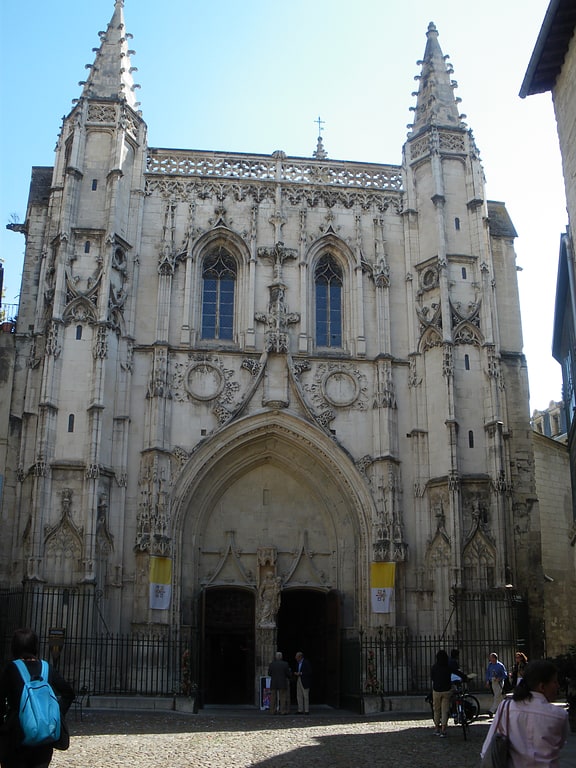
Basilica of St. Piotr in Avignon-a Roman Catholic parish church in Avignon located on Saint-Pierre Place. The current building comes from the fourteenth century and was built in a place earlier from the 7th century.
Musée Requien
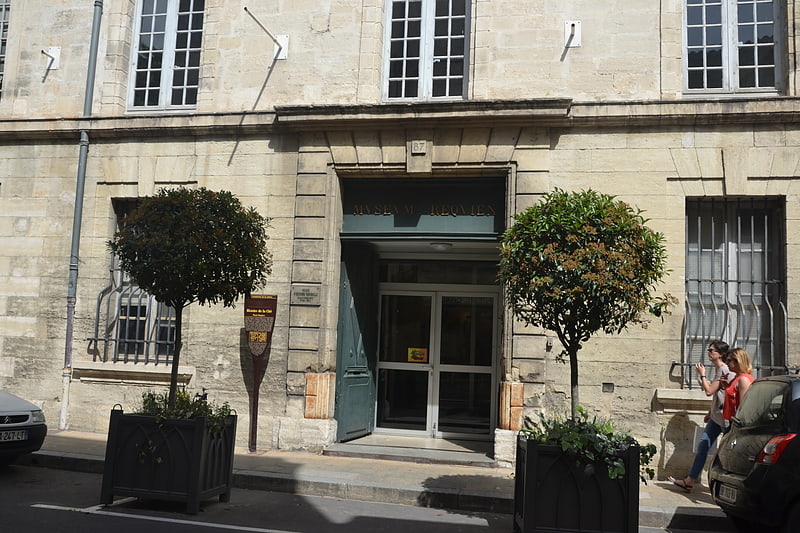
Museum in Avignon, France. Musée Requien or Museum Requien is a natural history museum in Avignon, France. Some of Jean Henri Fabre's work is displayed here.
Musée Requien is named in honor of French naturalist Esprit Requien (6 May 1788, Avignon – 30 May 1851, Bonifacio, Corse-du-Sud).[13]
Address: 61 rue Joseph Vernet, 84000 Avignon (Intra-Muros)
Collection Lambert
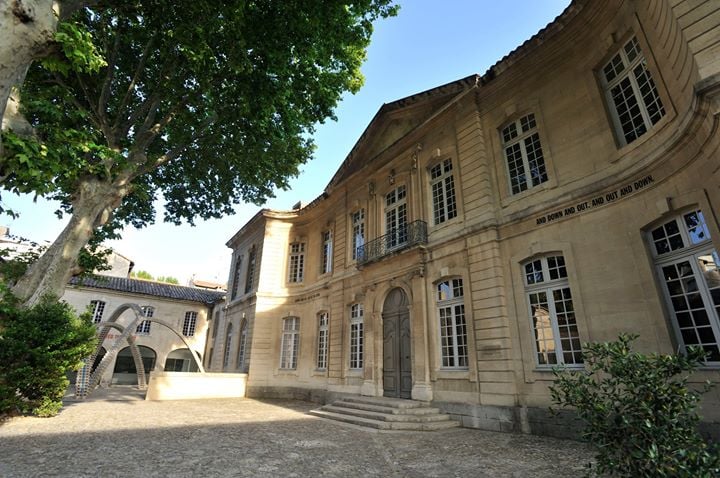
Museum, Specialty museum, Art museum
Address: Hôtel de Caumont, 84000 Avignon (Intra-Muros)